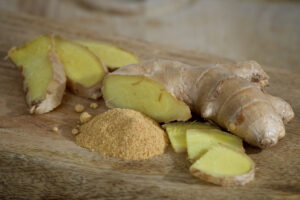Check this out!
Many of us enjoying growing our own herbs so we may pick fresh leaves and use in recipes. Every spring, I have a self-watering container which hosts a variety of my favorites like parsley, sage, rosemary and thyme. And while having herbs fresh on the ready is awesome, the plants usually grow faster than I can use them. So what do I do? I dehydrate them.
McGill University Office for Science and Society in wrote a fun little piece about these very four herbs. It was fun reading the history and learning how these herbs trace back to ancient Greece and the Middle Ages. Their article went onto say, “Some historians claim that these specific herbs were mentioned both because of their medicinal properties and the mystical belief at the time that herbs had the ability to influence emotions. Parsley, for example, was thought to remove bitter feelings in the same way it eliminated bad odours.”
Regardless as to why you grown and use herbs, here are simple dehydrating instructions so you may preserve their freshness and use them in meal creation well after the plant itself has died.
Dehydrating Parsley, Sage Rosemary and Thyme Instructions
Parsley
- Pinch leaf stems with the tree segments off the sprigs. Remove any course stems. Place on a mesh drying tray of your dehydrator.
- Dry at 110℉ for 8 hours. Leaves should be brittle and stems should break when bent.
- When ready to use, crumble the leaf segments in the palm of your hands or use whole.
Sage
- Remove leaves from stem. Small leaf clusters can be left intact. Place the leaves and clusters on a mesh dray of your dehydrator, making sure the stem side (the thickest part) is facing the airflow.
- Dry at 110℉ for 14 hours. During drying, bring the bottom tray up to the top, rotating each tray so it can have an hour or two nearest the heat source which is typically at the base of the dehydrator. If your heat source is at the rear, there is no need to rotate shelves.
- When ready to use, crumble the leaf segments in the palm of your hands or use whole.
Rosemary
- Do not remove the spiky leaves from the stems. Simply cut the stems off prior to the thick, woody area. Place the entire stem onto the mesh drying tray of your dehydrator.
- Dry at 110℉ for 12 to 14 hours. Like with Sage, during drying, rotate each tray so it can have an hour or two nearest the heat source which is typically at the base of the dehydrator. If your heat source is at the rear, there is no need to rotate shelves. Once dry, strip the leaves from the stem and store.
- When ready to use, you may keep the leaves whole or crumble them in the palm of your hands. You may also place the dried leaves in a nut chopper and coarsely chop to your desired size before using in a recipe.
Thyme
- Like Rosemary, do not remove the tiny leaves from the stems. Place the entire stem onto the mesh drying tray of your dehydrator.
- Dry at 110℉ for 12 to 14 hours. Like with Sage and Rosemary, during drying, rotate each tray so it can have an hour or two nearest the heat source which is typically at the base of the dehydrator. If your heat source is at the rear, there is no need to rotate shelves. Once dry, strip the leaves from the stem and store.
- When ready to use, you may use the entire tiny leaf as is, or you may chop fine. Another handy option is to place dried leaves into a coffee or herb grinder and make it into a fine powder.
Storage
Store leaves, clusters and segments intact in a mason jar and seal lid with your vacuum sealer. You may also store them in a Ziploc back with an oxygen absorber. Be sure to store away from direct and indirect sunlight. For optimal storage conditions, store in an area without much temperature fluctuation and in temperatures between 50℉ to 70℉ and wit limited to no humidity.
Happy Dehydrating!
xoxo
Diane, The Canning Diva
www.canningdiva.com


